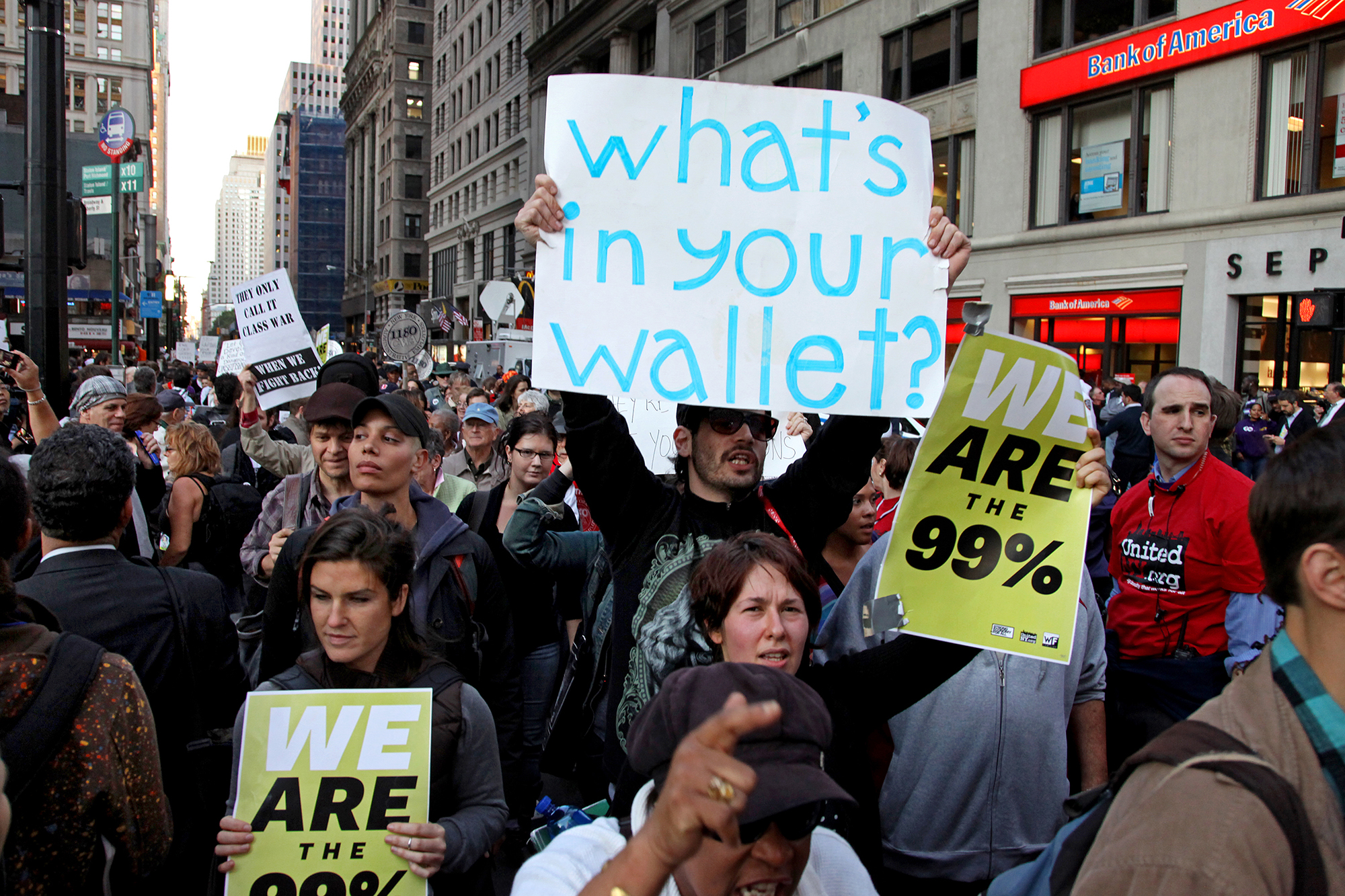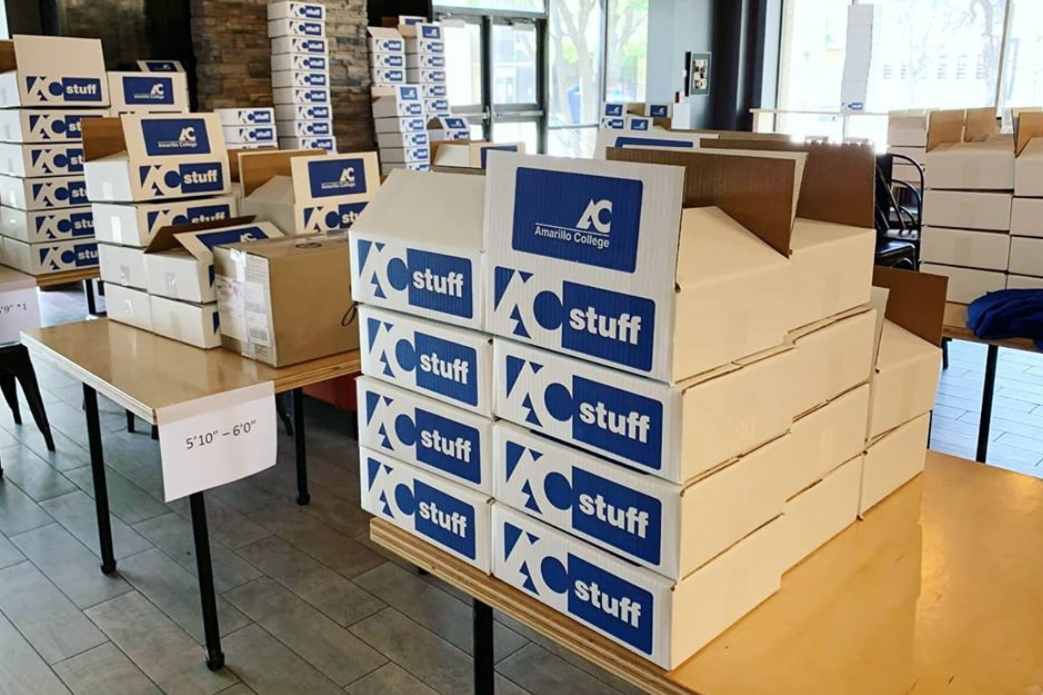As businesses have begun opening back up, we have been subjected to increasing hand-wringing from business owners, particularly restaurants and similar service-based workplaces, who insist they are facing a labor shortage. The argument, according to some, is that unemployment benefits are too generous and are discouraging work, leaving employers unable to hire workers. Thankfully, these stories are being rebutted by workers, journalists, and analysts armed with a combination of personal experience and hard data. As expert after expert picks apart the flaws in employers’ arguments, though, it has become clear that what employers are worried about isn’t a labor shortage at all: It’s a power shift.
Get Talk Poverty In Your Inbox
For years, employers had access to a labor force where workers were so desperate that they’d take any job offer. The combination of poverty-level minimum wages, historically low unionization rates, at-will employment, worker misclassification, a battered safety net, a lack of paid time off or employer-sponsored benefits, and a host of other policies and practices have firmly tilted the scales toward employers, allowing for pervasive exploitation and abuse, particularly for the nearly 3 in 4 Americans living paycheck to paycheck even before the pandemic.
The situation is more dire after a job loss. Recently laid-off workers are likely to have almost no safety cushion — more than half of consumers had $3,000 or less in their checking and savings accounts combined in 2019. They may also have no access to unemployment benefits — just 28 percent of eligible unemployed workers in 2019 actually received benefits. That makes workers desperate for any job, no matter how terrible, that can help them scrape by. During a recession with mass layoffs, when millions are facing that same desperation, businesses have all the power to offer unsafe jobs in places like crowded meatpacking plants and bustling restaurant kitchens to overqualified applicants with meager compensation, unless the government intervenes.
Unemployment insurance, especially the enhanced benefits during the pandemic, gives workers breathing room. The benefits aren’t enough for people to live large — even with the extra $300 a week, unemployment benefits will fall noticeably short for a modest family budget in every county in the country. Benefits just let workers be slightly less desperate, alleviating the pressure to take unsafe jobs — many of which are especially dangerous during a pandemic — that pay poverty wages. Instead, they can hold out a bit longer for better-paying jobs that match their skills, education, experience, and interests.
One dishwasher, Jeremy, told journalist Eion Higgins that “the stimulus and unemployment benefits have definitely helped me be more picky about what jobs I’ll take since I don’t have to take anything I can get in order to cover rent and groceries.” Another, Alan, reported that “I have a degree in forestry and since I’m currently relatively financially secure I can take more time to find a job in the field that I actually want to work in.” A third, Owen, said “I left because having some time off to think and plan helped focus my desire to be paid better and treated better… I expect to make at least double and finally have nights and weekends off. Hopefully I’ll be treated with a little more dignity but I know that’s not always the case.”
This is very different than saying unemployment benefits are discouraging work in general. Studies of unemployment insurance have shown that laid-off workers who receive benefits search harder for jobs, receive better paying offers, and take roles that better match their education level. Specifically during the pandemic, several studies have looked at the $600 enhanced benefits and found that they had little to no effect on employment or job search. It’s hard to see how the current $300 boost would be any different.
Few workers even had access to unemployment insurance in the first place.
Despite what many businesses, commentators, and lawmakers are trying to claim, the data is continuing to prove that unemployment insurance isn’t standing in the way of hiring. Though overall job growth in April was disappointing, the leisure and hospitality sector — where most of the cries of labor shortage from employers are coming from — actually accelerated job growth with 206,000 new hires in March and 366,000 in April. In total, 430,000 people joined the labor force (meaning they weren’t searching for work before but now are), but that growth came entirely from men while women actually left the labor force on net in April, suggesting that this has more to do with a continued lack of child care. States with higher unemployment benefit levels, as well as low-wage sectors where benefits are more often higher than previous income, have actually seen faster job growth, indicating that unemployment insurance isn’t the cause of slow hiring.
In reality, few workers even had access to unemployment insurance in the first place. From April 2020 to January 2021, only 18 percent of unemployed people had received unemployment benefits in the last two weeks at any one time. It’s been even worse for Black (13 percent) and Asian (11 percent) workers and those without a college degree (12 percent), all of whom are overrepresented in low-wage industries like leisure and hospitality. Undocumented immigrants are also totally excluded from unemployment insurance, yet they are 10 percent of restaurant workers nationwide and almost 40 percent in cities like New York and Los Angeles. We saw the consequences of this early in the pandemic when meatpacking plants convinced the government to declare them essential, allowing them to call their employees back into work and leading to large COVID outbreaks among their workforces, disproportionately made up of immigrants and people of color, and in communities where the plants are located.
Even so, employers have managed to complain loudly enough about the possibility that they may have lost a hint of power that sympathetic legislators are rushing to accommodate them. As of mid-May, in 16 states and counting, Republican governors had announced their plans to block all of their residents from receiving their rightful federal unemployment benefits, citing anecdotes of businesses struggling to hire at their current wages as justification. Ending those benefits before the jobs are there and while millions are still losing their jobs each month will take billions of dollars — over $10 billion from almost 2 million unemployed workers by one estimate — out of the economy in those states, even if some of those people cut off find work, and will effectively slow the recovery through decreased spending.
If there was a labor shortage, employers have common sense options to make themselves more competitive: They could raise wages to livable levels, as many businesses have found success doing, or pressure their lawmaker friends to support vaccination efforts and fund safe and affordable child care. Instead, some businesses are relying on half measures, such as offering one-time signing bonuses specifically because they know those are insignificant when compared to what a worker would earn long-term from permanently higher wages. Many others are simply pushing the same narrative they have fallen back on for more than a century — through the New Deal, the Great Society, welfare reform, and the Great Recession — by claiming workers who dare demand more are lazy and ungrateful. It’s not a coincidence that the same people shouting to end unemployment benefits now are also opposing the Raise the Wage Act, the PRO Act, and other measures that might materially improve the lives and build the power of workers.
This power struggle has made its way to the president’s desk. In a White House speech on Monday, President Biden said, “Anyone collecting unemployment who is offered a suitable job must take the job or lose their unemployment benefits.” (Emphasis added.) Now the government has to decide who gets to define “suitable.” Businesses would like it to mean the pre-COVID status quo: low wages, inconsistent hours, minimal (if any) benefits, and limited protections. Workers want it to mean that jobs are safe and offer a decent quality of life — including livable wages, manageable hours, and accommodations for caregiving and quality of life.
The Biden administration has taken some positive steps in defining a good job for federal contractors, setting a $15 minimum wage, raising standards, and strengthening anti-discrimination protections. It’s vital that the administration continue to support all workers in the face of overwhelming employer power. There’s no shortage of ways to do so: They can push to improve the unemployment insurance system through federalization or establishing minimum standards and automatic stabilizers, like those proposed in the Wyden-Bennet reform bill; pass the Raise the Wage Act to raise the minimum wage to $15 and eliminate subminimum wages; implement better regulations and enforcement to prevent wage theft, overtime abuse, misclassification, and OSHA safety violations, among other abuses; pass the PRO Act to ensure workers can exercise their right to come together in unions; and so much more.
We can’t continue to give employers all the power in the labor market. President Biden and other lawmakers must make it clear that now is the time to stand with workers and give them some say in their own working conditions and livelihoods.











